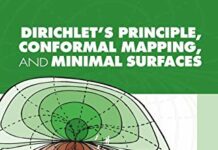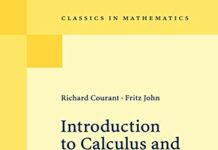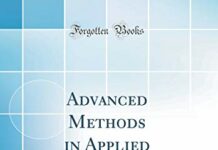
Ebook Info
- Published: 1989
- Number of pages: 560 pages
- Format: PDF
- File Size: 156.07 MB
- Authors: Richard Courant
Description
Since the first volume of this work came out in Germany in 1924, this book, together with its second volume, has remained standard in the field. Courant and Hilbert’s treatment restores the historically deep connections between physical intuition and mathematical development, providing the reader with a unified approach to mathematical physics. The present volume represents Richard Courant’s second and final revision of 1953.
User’s Reviews
Editorial Reviews: About the Author David Hilbert (1862 – 1943) received his PhD from the University of Königsberg, Prussia (now Kaliningrad, Russia) in 1884. He remained there until 1895, after which he was appointed Professor of Mathematics at the University of Göttingen. He held this professorship for most of his life. Hilbert is recognized as one of the most influential mathematicians of the 19th and early 20th centuries. His own discoveries alone would have given him that honour, yet it was his leadership in the field of mathematics throughout his later life that distinguishes him. Hilbert’s name is given to Infinite-Dimensional space, called Hilbert space, used as a conception for the mathematical analysis of the kinetic gas theory and the theory of radiations.Richard Courant (1888 – 1972) obtained his doctorate at the University of Göttingen in 1910. Here, he became Hilbert’s assistant. He returned to Göttingen to continue his research after World War I, and founded and headed the university’s Mathematical Institute. In 1933, Courant left Germany for England, from whence he went on to the United States after a year. In 1936, he became a professor at the New York University. Here, he headed the Department of Mathematics and was Director of the Institute of Mathematical Sciences – which was subsequently renamed the Courant Institute of Mathematical Sciences. Among other things, Courant is well remembered for his achievement regarding the finite element method, which he set on a solid mathematical basis and which is nowadays the most important way to solve partial differential equations numerically.
Reviews from Amazon users which were colected at the time this book was published on the website:
⭐I studied this book as a graduate student at the Courant Institute a long time ago. Over the years my copy and I were separated. When I saw this available on Amazon through Eborn Books, I knew I had to buy it. The condition of this book is excellent for a book that was published in 1953. Kudos to Eborn Books
⭐This book is intended for mathematicians and not for physicists. All of the mathematics is developed through proofs of theorems. The chapter on approximation of functions is the best in the book. There is also a short introduction to Lebesgue integration which is the best explanation of what it actually means that I have ever seen! (i.e. not having to develop the messy business of measure theory that fills up 10s of pages in most books).If you want to learn graduate level mathematics (i.e. analysis and PDEs) in gorey detail then this is the book for you. If you want to understand applications, then it is not. I don’t like the term “mathematical physics.” It depend on which department teaches it. A mathematician will focus on the topics in this book. A physicist would focus on methods and not on proofs.
⭐good book, useful for physics grad students. But it does not have any problems
⭐excellent!
⭐This is an excellent reference regarding applied mathematics for physics and related fields.
⭐amazing
⭐I will not claim to have read the whole book . But I have read his brief stint on lebesgue integration(after seeing the comment ‘theory of advance mathematics(not physics)’ and his chapter on integral equations and on that in volume two giving a rigorous ground on generalized functions carefully. I give this book 5 stars based on what I have read.The material on lebesgue integration being two pages long is clear because it is mostly formulation. It does not give proofs. However proofs are found in a great many places and there is no point in a book meant to be read, especially one like this, being encyclopedic. This is mainly useful as motivation(why do we need a new integral, how we end up needing the inverse image of the partitions of the range to be sets we can find a useful area of, and why we need the measure to be countably additive. His motivation for dominated convergence theorem is great, giving a weaker version that is easy to understand. Then he formulates what he means by the hilbert space being closed and how it implies completeness.(if you forgot what this means this is formulated in the couple pages where he talks about it too).This motivation that courant and hibert have given is very important and missing in standard measure theory and integration texts (even the ones with flowery introductions to each theorem and chapter like STEIN and SHAKARCHI) because otherwise, this all feels like unnecessary complications.The section on integral equations was very clear to me. Maybe it is because I struggled on it for so long and let it sit before picking up this section. I think it is because it was straight after the section on lebesgue integration and right before he talks about what are today called ‘good” kernels and approximations to the identity. Thus this gives motivation for trying to formalize what exactly the limit to the identity. In any pde where one needs to take derivatives and ends up with generalized functions(e.g.dirac delta), the equation needs to be written in terms of an integral equations. This(placement) principally motivates his study of integral equations. His elaboration on generalized functions in volume two are equally admirable.
⭐This book was originally written to provide physicists with the mathematics needed for electrodynamics, Lagrangian mechanics, and other fields of classical physics. It was subsequently used by the inventors and developers of quantum mechanics to figure out the mathematics and develop it as a practical theory. Courant-Hilbert provides a comprehensive, accurate, and elegant treatment with all of the major results they needed. It was so essential that the US Government seized the copyright to the German text during World War II. The 1953 English translation added material on applications to quantum mechanics. If you want to understand quantum theory, you should understand the material in this book.
⭐A classic for reading
⭐On August 1, 2011, Congress amended the CPSIA to exclude ordinary books and ordinary paper-based printed materials from the third party testing and certification requirements of the CPSIA. An “ordinary book” as defined by the amendment, means: “a book printed on paper or cardboard, printed with inks or toners, and bound and finished using a conventional method, and that is intended to be read or has educational value.” H.R.2715.The manufacturer of the book containing this web address only manufactures ordinary books bound and finished in a conventional manner; thus, the books produced by this manufacturer are not subject to the testing and certification requirements of the CPSIA.
Keywords
Free Download Methods of Mathematical Physics, Vol. 1 in PDF format
Methods of Mathematical Physics, Vol. 1 PDF Free Download
Download Methods of Mathematical Physics, Vol. 1 1989 PDF Free
Methods of Mathematical Physics, Vol. 1 1989 PDF Free Download
Download Methods of Mathematical Physics, Vol. 1 PDF
Free Download Ebook Methods of Mathematical Physics, Vol. 1




